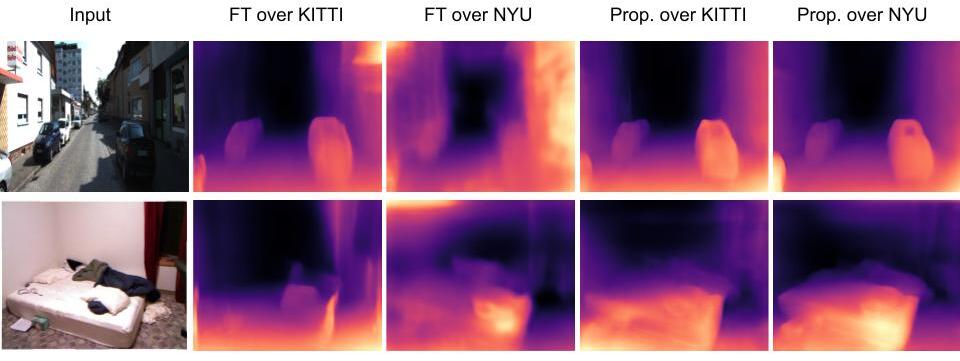Towards Continual, Online, Self-Supervised Depth
Although depth extraction with passive sensors has seen remarkable improvement with deep learning, these approaches may fail to obtain correct depth if they are exposed to environments not observed during training. Online adaptation, where the neural network trains while deployed, with self-supervised learning provides a convenient solution as the network can learn from the scene where it is deployed without external supervision. However, online adaptation causes a neural network to forget the past. Thus, past training is wasted and the network is not able to provide good results if it observes past scenes. This work deals with practical online-adaptation where the input is online and temporally-correlated, and training is completely self-supervised. Regularization and replay-based methods without task boundaries are proposed to avoid catastrophic forgetting while adapting to online data. Effort has been made to make the proposed approach suitable for practical use. We apply our method to both structure-from-motion and stereo depth estimation. We evaluate our method on diverse public datasets that include outdoor, indoor and synthetic scenes. Qualitative and quantitative results with both structure-from-motion and stereo show superior forgetting as well as adaptation performance compared to recent methods. Furthermore, the proposed method incurs negligible overhead compared to fine-tuning for online adaptation, proving to be an adequate choice in terms of plasticity, stability and applicability. The proposed approach is more inline with the artificial general intelligence paradigm as the neural network learns continually with no supervision. Source code is available at https://github.com/umarKarim/cou_sfm and https://github.com/umarKarim/cou_stereo.
PDF Abstract



